Sonos Beam review – in pictures
Sonos’ new soundbar is smaller, cheaper and packed full of smarts
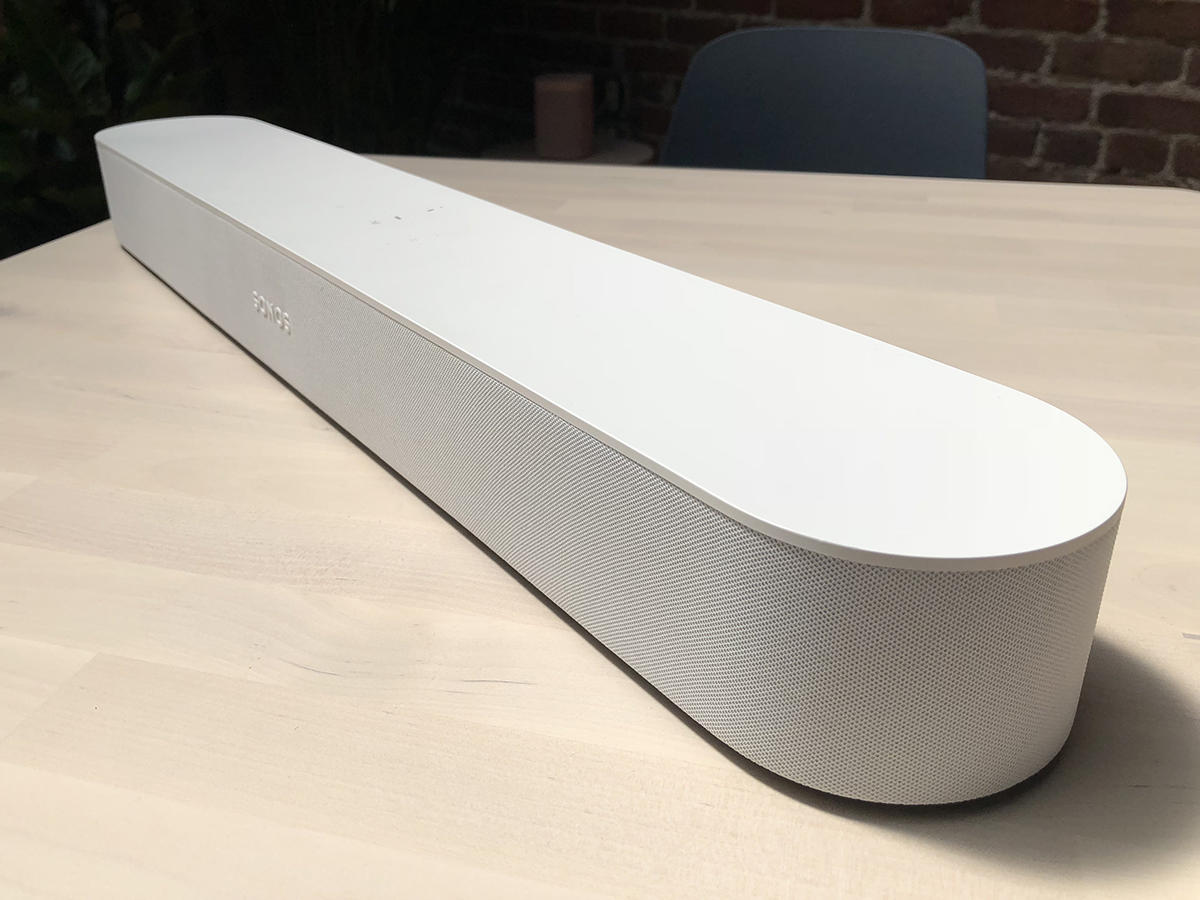
BEAM ME UP, SONOS
Living room audio has gone through another major evolution in recent years. Voice assistants now allow you to ditch the remote controls and speak to your devices, while Apple AirPlay means you can beam music to your speakers without even using an app. So, as good as the original Sonos Playbar sounds, it’s started to feel as though it’s overdue an upgrade.Enter Sonos’ new soundbar, Beam. The Beam isn’t so much a replacement for Playbar, but more of a new entry level product for people who want to upgrade their living room sound with a product that’s simple to use and supports the latest features we’ve come to expect from smart home devices. But given its much more compact size, does it have the sound quality we’ve come to expect from Sonos?
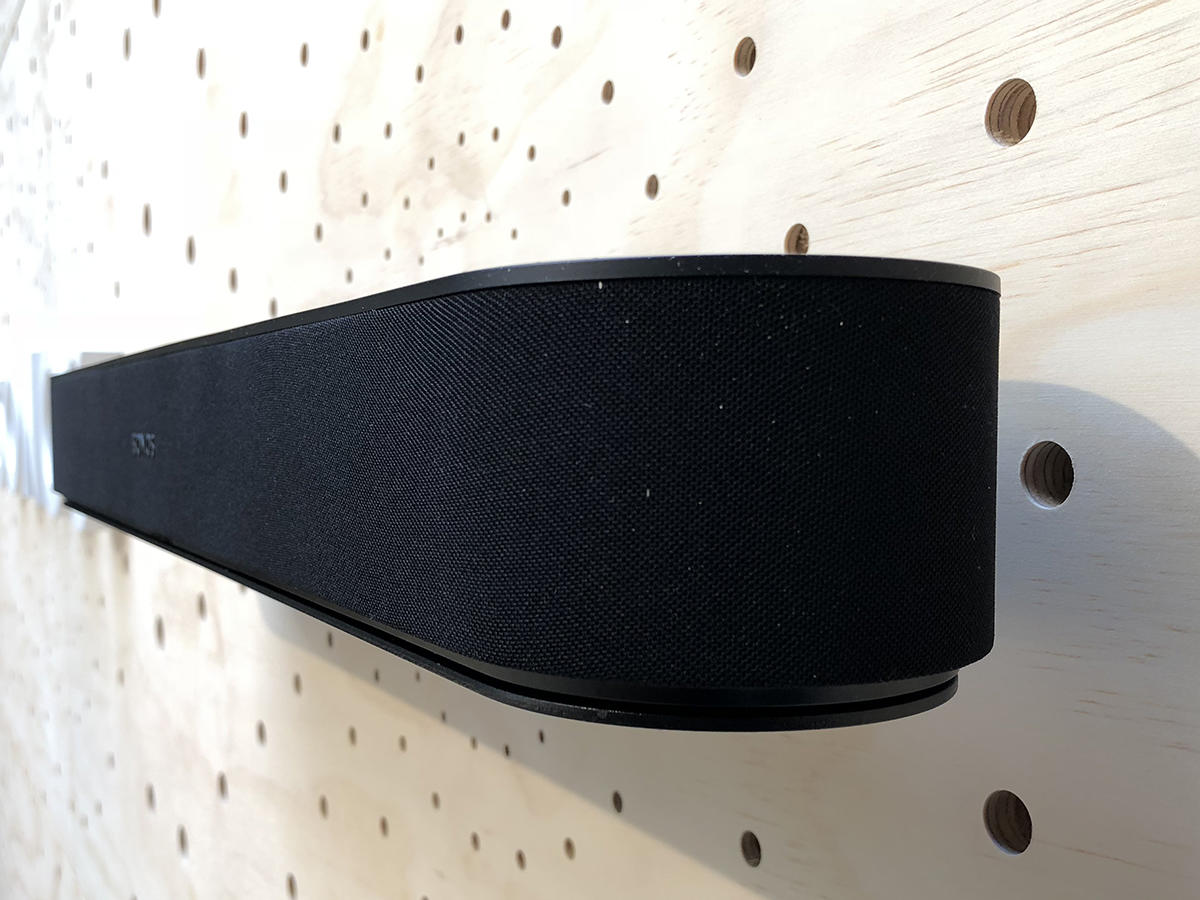
CURVY COUTURE
The original Sonos Playbar is a monolithic rectangle of a speaker – so big that it really needs its own shelf on your TV rack. Conversely, the Sonos Beam has been designed to sit underneath your TV on the same shelf – in many cases, it may even be able to slip in between the legs of the stand. Take our test TV, for example – Philips’ gorgeous 55-inch Ambilight OLED, the 55POS9002. At 8.5cm tall, Playbar cuts off the bottom of the picture when placed directly under the TV. At 6.9cm, Beam doesn’t block any of the image, meaning it basically disappears when watching TV. As long as your TV is over 30-inches, which most living room TVs are, then Sonos claims it will sit comfortably underneath without blocking the image.
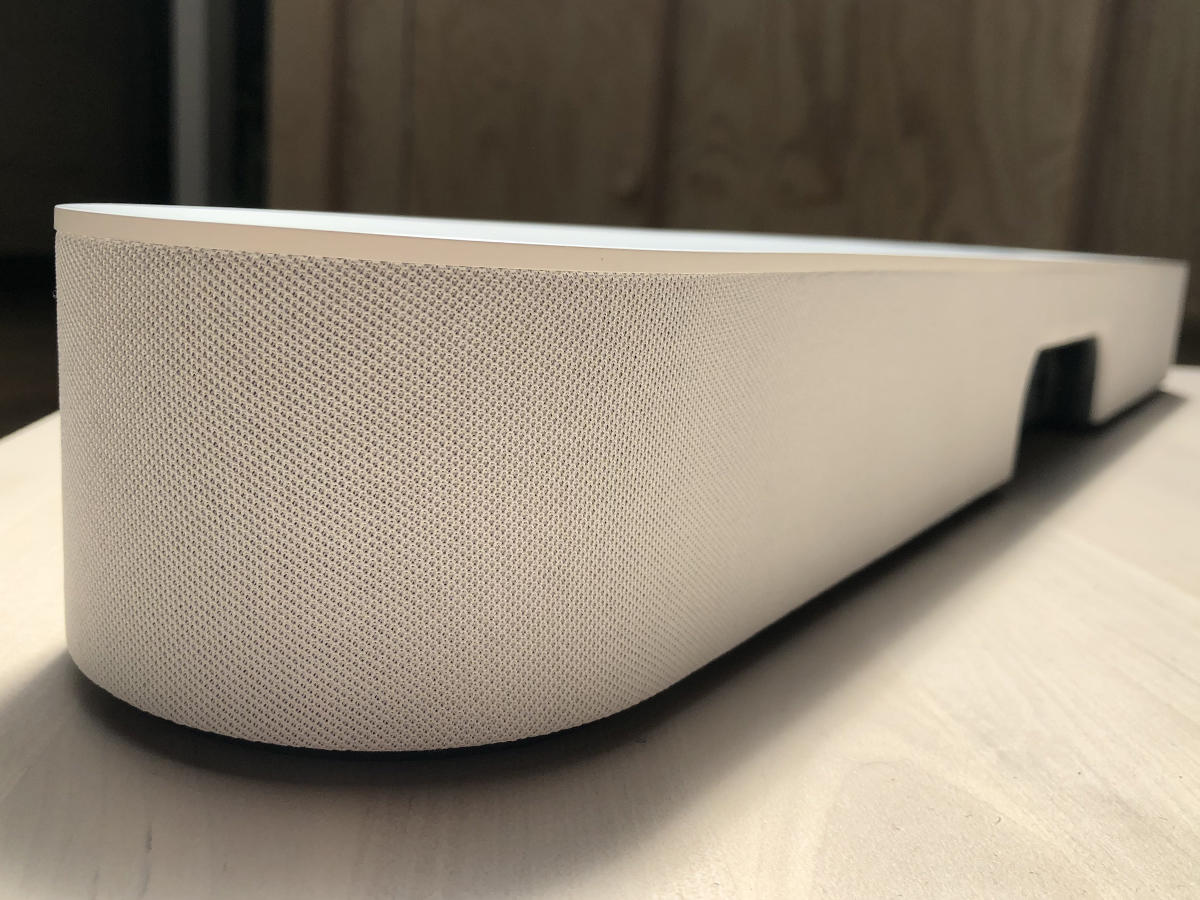
PUNCHING UP
When it comes to sound quality, bigger is often better, as a larger housing usually means more sound-generating components with more space to breathe. On paper, that doesn’t sound promising for Beam. It’s 60 per cent smaller than Playbar, has four woofers rather than six, one tweeter rather than three, and five digital amplifiers rather than nine. It’s understandable, then, that there is undoubtedly a performance difference between the two products. But, given one costs £399 ($399) and the other costs £699 ($699), it’s not as marked as you might expect. In fact, it’s actually quite difficult to tell the difference between the two products side-by-side at normal volume levels.
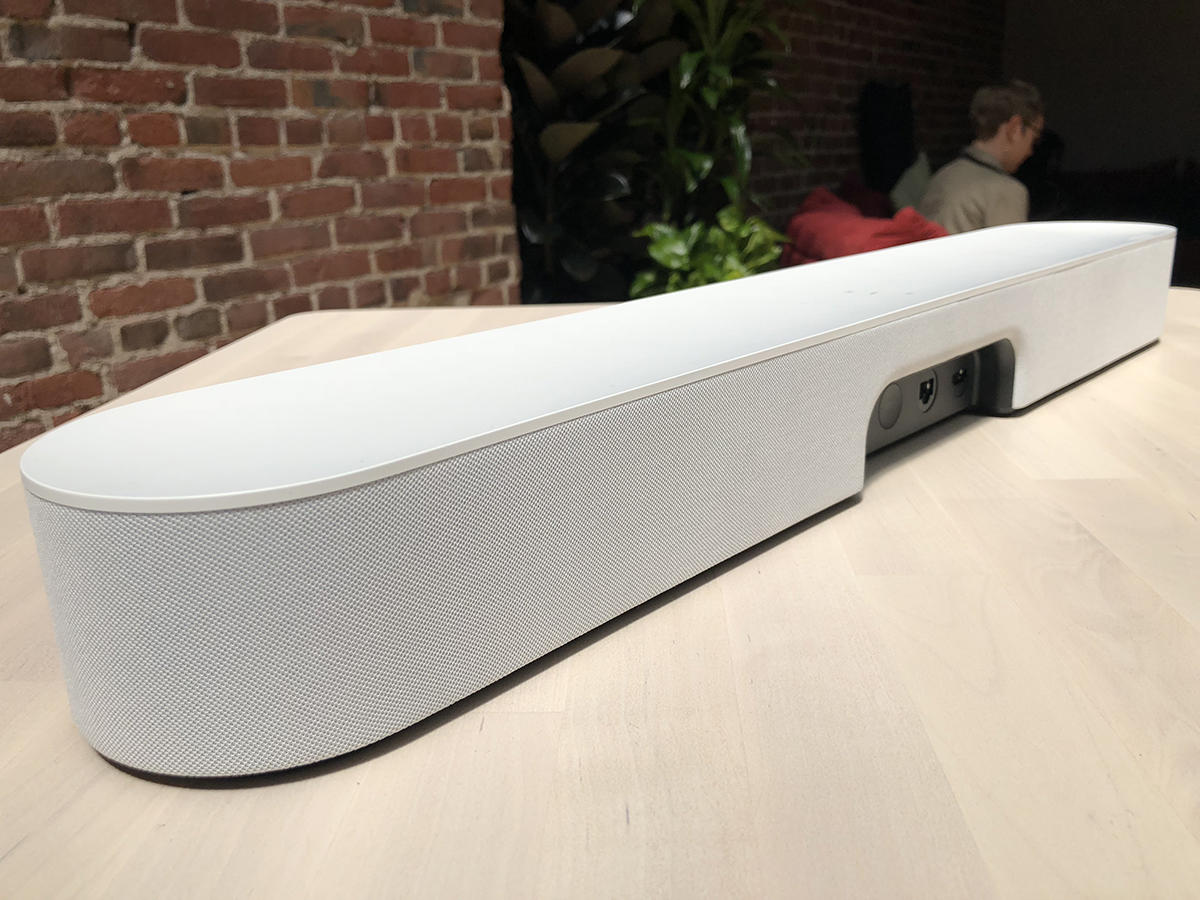
TWO OF A KIND
In fact, it’s actually quite difficult to tell the difference between the two products side-by-side at normal volume levels. It’s only when you’re cranking the music up past 80 per cent on Beam that you notice the bass lacks the punch and the vocals lack the clarity of Playbar. Given that price difference, it’s Beam that’s easier to recommend for most people. Playbar costs nearly twice as much as Beam, but doesn’t sound twice as good. Once you add a Sonos SUB (£699/$699) into the mix, which goes a long way to rectifying Beam’s low-end oomph, it’s even harder to tell the difference between the two products.
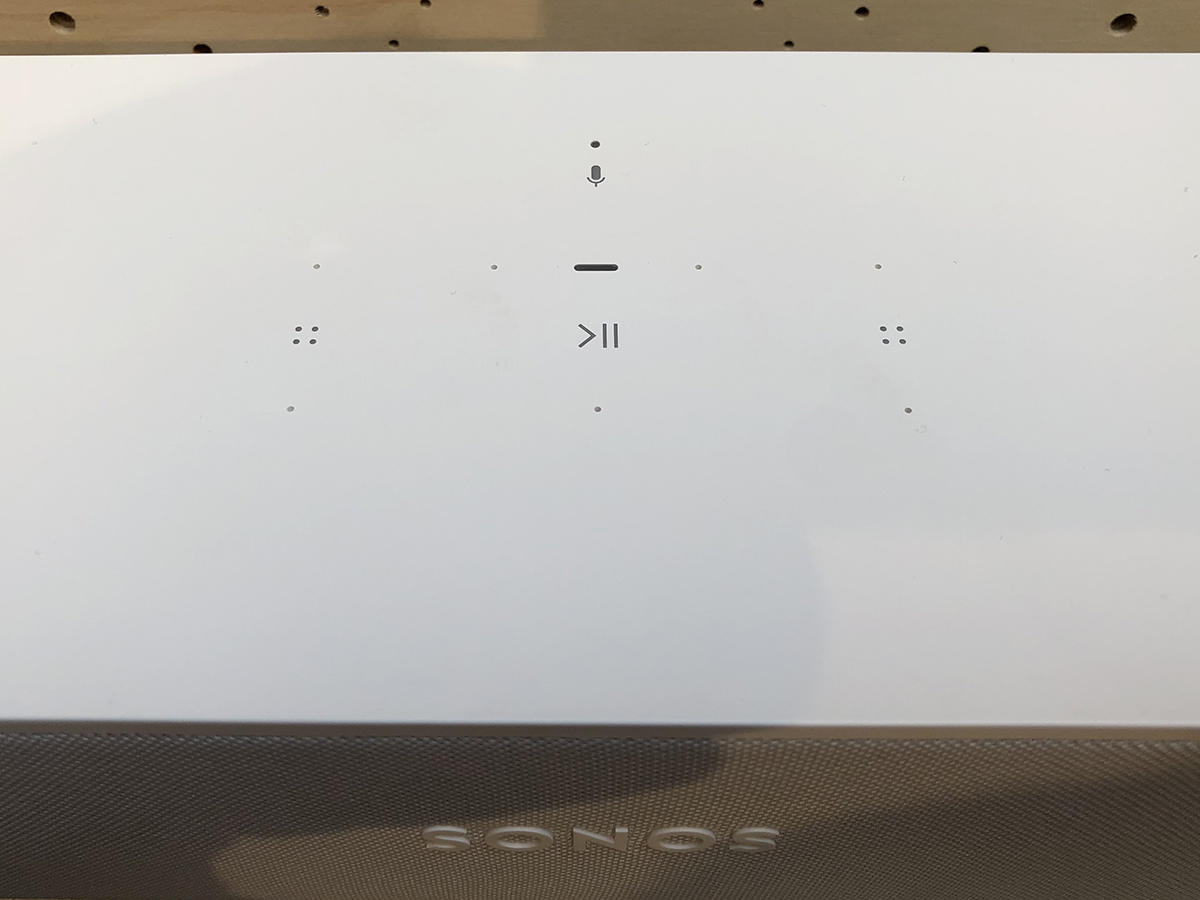
WHAT WIRES?
Given Sonos’ sells itself as the “wireless home sound system”, it’s no surprise to find that there aren’t many connections on Beam. Around the back of the device, there’s just a figure-of-8 power input, wired ethernet connector and HDMI socket. This is HDMI’s first appearance on a Sonos product, and it reflects how AV connectivity has changed in the last few years. Whereas Playbar had an optical input which was simply a one-way audio connection, Beam supports ARC, which means Beam can talk to your television and vice versa. This means you can use your TV remote to control volume on Beam, while Beam can turn your TV on and off.

NOAH’S ARC
This means that you’re going to need a TV that supports ARC – most big brands have done so since 2010 or so – and have a spare HDMI socket on the back of it. This was a small problem for us, as we had a satellite box, a media player and a couple of games consoles taking up the four ports on our test TV. Thankfully you can pick up an HDMI switch for a couple of quid if you’re struggling. Once plugged in, it’s very easy to set up – the Sonos app immediately recognised we were using a Philips TV, and gave instructions on how to activate ARC in the settings. And if you’re using an old TV that doesn’t support ARC, then you can still use the included optical adaptor.

SPEAKER FEATURE
While Beam can’t quite match Playbar when it comes to sound quality, it blows its older brother out of the water when it comes to features. Beam is packed with modern tech from a built-in voice assistant to new streaming standards and the ability to talk to your TV. Most notably for us, Beam launches with Amazon Alexa built-in, and will support Google Assistant at some point in future (although don’t hold your breath – it’s been a long time coming and still doesn’t have a launch date at time of review). Once you’ve updated the Sonos app on your mobile device and linked Beam to your Alexa app, you’re good to go. Almost anything you can do with other Alexa devices you can do with Beam – ask her for the weather, the news headlines or her favourite member of The Beatles, and she’ll obligingly give you an answer.

SONOS BEAM VERDICT
Sonos’ home cinema gear has always been a little expensive, but with Beam, it’s created a great value soundbar. It sounds ace, comes with loads of features, and is compact enough to fit into the average living room AV setup without taking over. If you want the best sounding system then Playbar or Playbase are still the products to go for, but they’re a lot more money, they don’t have Alexa, and they don’t control your TV in the same slick way as Beam does. As it stands, Sonos Beam is easy to recommend for anyone who loves watching TV, and a high-value intro to the brilliant world of Sonos home audio.


